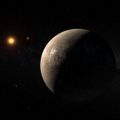随着PTE考生对PTE口语和PTE听力的重视,大家口语和听力的分数得到极大提高,但是PTE阅读渐渐成为考生们新的难题。墨尔本悉尼文波PTE特别为PTE考生们挑选了适合练习PTE阅读的文章,主题,内容,长度都与PTE阅读题中的文章相似。激活学过的词汇,更新新的词汇,提高阅读速度,全面提升自己的阅读能力。
How NASA Fights to Keep Dying Spacecraft Alive
Sometime in the next 10 or so years, the massive antennas that comprise NASA’s Deep Space Network will pick up a faint, distant signal for the final time. When that day comes, humanity will say goodbye to Voyager 1, the first and to date only spacecraft to reach interstellar space. For scientists at NASA, Voyager’s death will be a moment long prepared for, and something they will have spent decades attempting to delay.
“It’s kind of like the death of a family member,” NASA scientist Suzanne Dodd told Vocativ. Dodd is the project manager of the Voyager Interstellar Mission at NASA’s Jet Propulsion Laboratory. “You know it’s coming, but it’s still sad to recognize it’s really over and you can’t communicate with the spacecraft anymore.”
No human-made object has ever traveled farther than Voyager 1, which has made it about 12.5 billion miles from Earth since its launch in 1977. That’s about 137 times the distance from Earth to the Sun, a measure known as an astronomical unit or AU. The probe’s twin, Voyager 2, is at about 112 AU, meaning it too should reach interstellar space sometime in the next few years. Given Voyager 1’s enormous head start and speed – it’s traveling at around 40,000 miles per hour – it’s certainly conceivable that nothing will overtake it as humanity’s most distant outpost in any of our lifetimes.
But there’s no getting around it: Their condition is terminal, and what Dodd and her team are engaged in is the equivalent of deep space hospice care. While the nearly 40-year-old spacecraft present many identical challenges like managing the fading power reserves and guarding against the incredible cold of outer space, each has developed its own particular chronic conditions. “You can think of them as twins, like twin sisters, but different ailments have affected the different spacecraft,” said Dodd. “Voyager 2 is kind of tone-deaf. You need to rack through several frequencies before it finds one that it can hear.”





